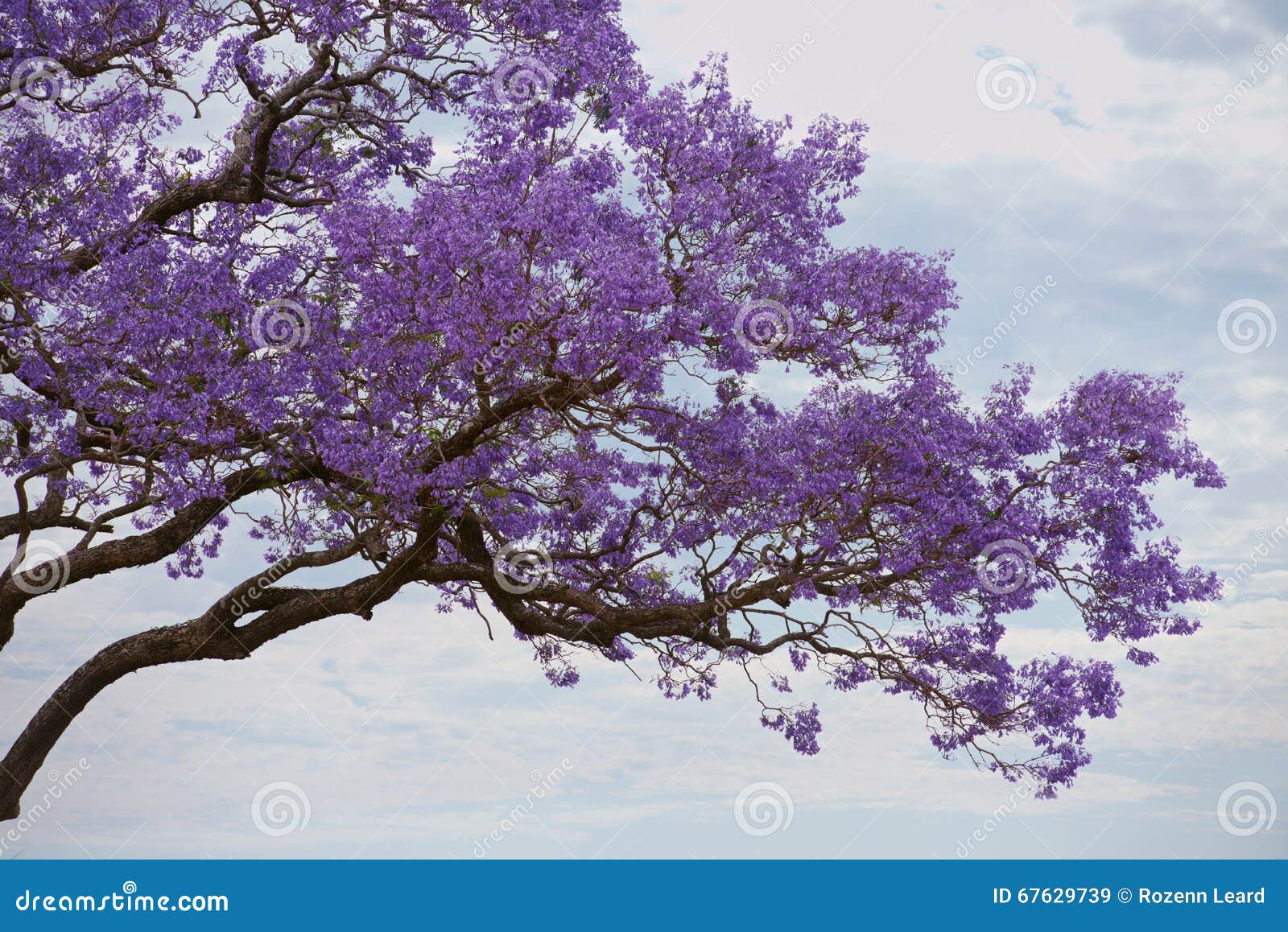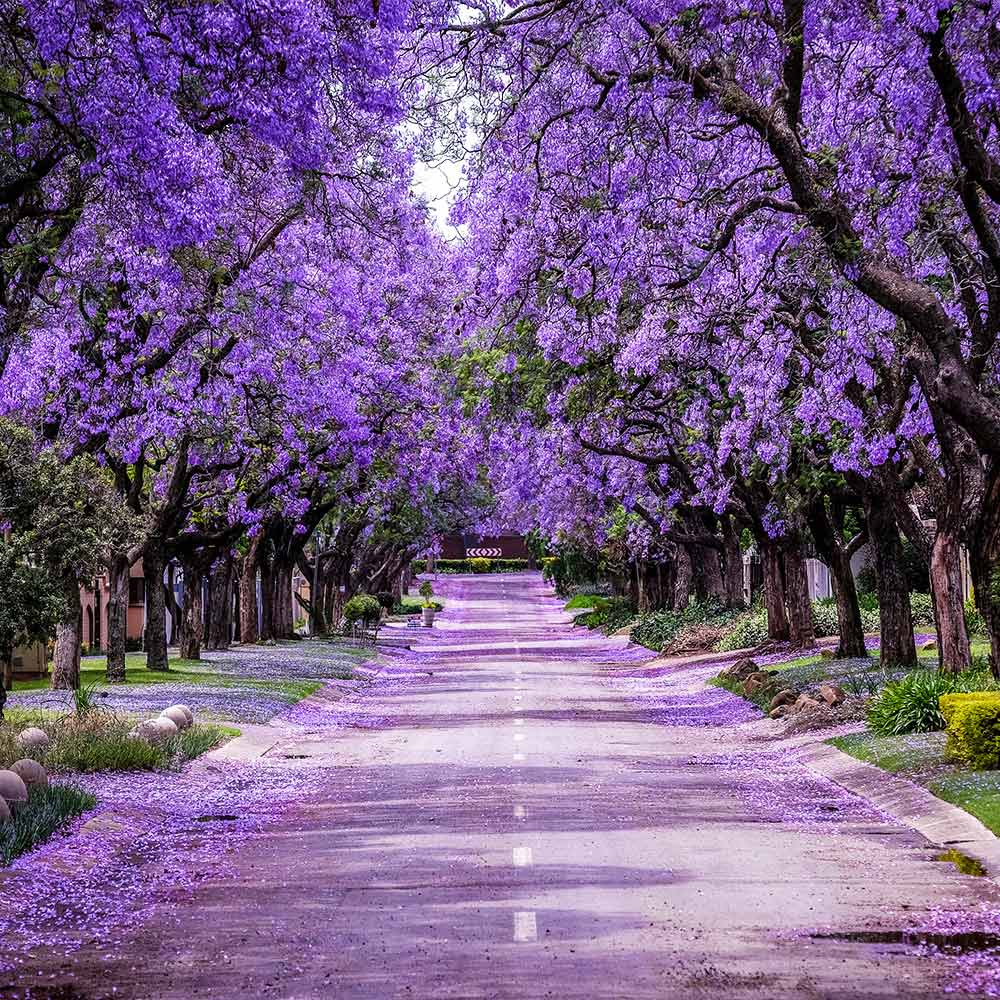

It’s great to see in our gardens and across the landscape.” “The spread of rain across the year has been good for a lot of plants. “Like most trees, the season preceding the flowering is quite important,” Barrett says. Russell Barrett, a research scientist at the Royal Botanic Garden in Sydney, says that, as in 1865, this year’s flowering should be aided by decent rainfalls. An account of the Prince of Wales’ birthday celebrations in the Sydney Morning Herald from 10 November 1865 describes admirers observing well-established trees: “Many enjoyed a stroll through the botanic gardens, which show the beneficial effects of the late rain some of the most beautiful trees are now in luxuriant blossom, in particular the lilac flower of the Jacaranda mimosifolia is an object of much admiration.” The first official records of it being germinated in Australia are at Brisbane’s botanic garden in 1864, but news reports point to earlier plantings in Sydney. It’s unclear exactly when the jacaranda was introduced and the debate over it has become a botanical version of State of Origin. The vivid purple variety, Jacaranda mimosifolia, that is common in parks and gardens across the temperate areas of the continent, is native to the northern end of the high Andes in South America. What's more, their beautiful flowers are almost filmy when they shed, and if you add a little rain they can become very slippery.Australia’s love of jacarandas is an unlikely foreign affair – despite being such an accepted part of the landscape of our towns and cities they are not actually native. While the living tree is fire retardant, I have seen how the leaves can form thick, tinder-dry mats which can be a fire hazard, and can completely fill or block gutters and drains, causing major damage to homes after heavy rain. When it sheds its fine, feathery leaves, they have an amazing capacity to get into every nook and cranny, under roofs and into ceilings.

In such situations, it can form dense seedling thickets. This strong root system is one of the reasons jacaranda outcompetes local species, such as native grasses and wattles, and why very few other species can grow under it.

Its roots can be quite extensive and, depending on soil type, may damage paths and fences. In Africa, it has proved very difficult to eradicate and can only be planted with official permission. Jacaranda has been declared an invasive weed in South Africa and parts of Australia, with the fine seeds within the woody fruits very easy to germinate. The brittleness of the wood also leaves jacaranda vulnerable to damage during strong winds, but usually only smaller branches and twigs are affected. While the twigs and branches of the jacaranda break easily with an almost explosive crack, large pieces of wood can be used for wood turning, especially for bowls and handles. And as Christmas approaches, some people gather the pods, decorate them and use them as ornaments. This can be a bit disconcerting at first, but in mild wind it makes a soothing sound-a bit like a natural wind chime. These pods become almost woody and can rattle in the wind. When dry, you can decorate jacaranda pods and turn them into Christmas ornaments. I don't think this is a credible curse coming from such a beautiful tree. "If a jacaranda flower falls on your head, you will fail in your exams". The trees are even part of local lore at the University of Queensland, with students knowing of "purple panic" as they associate end of year exams with flowering. Jacaranda festivals are a highlight of the year in many towns across Australia, including in Grafton, Applecross, Goodna, Camden, Woodville and Ipswich, to name a few. But the genus Jacaranda is actually native to South America, and the most common variety in Australia, Jacaranda mimosifolia, may be from an Argentine source.įor this reason, and others, there are many who don't share the jacaranda love. Jacaranda is so well known to Australians and so well loved, that many of us think of them as a native. The colour of the flowers is often debated-is it indigo, blue or purple? Well, it's all of them and more as the colour ranges from deeper to lighter shades depending on the specimen, soils and season.


 0 kommentar(er)
0 kommentar(er)
